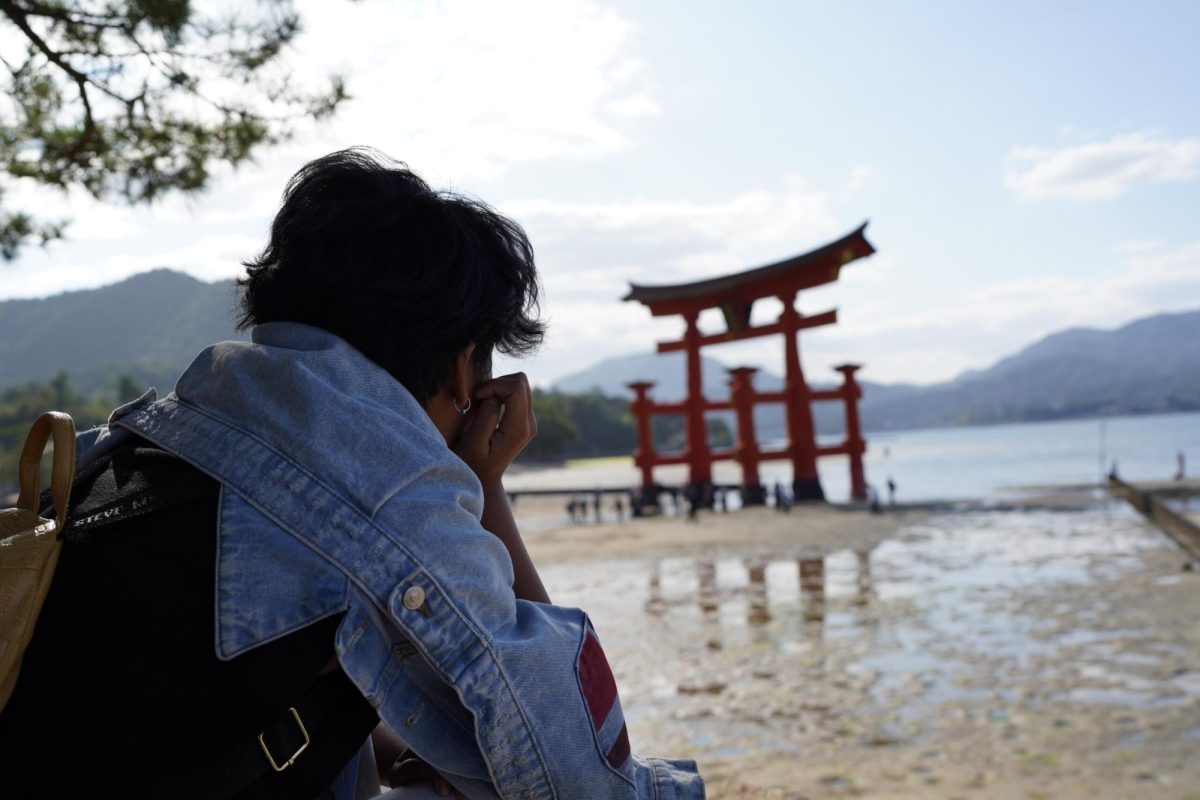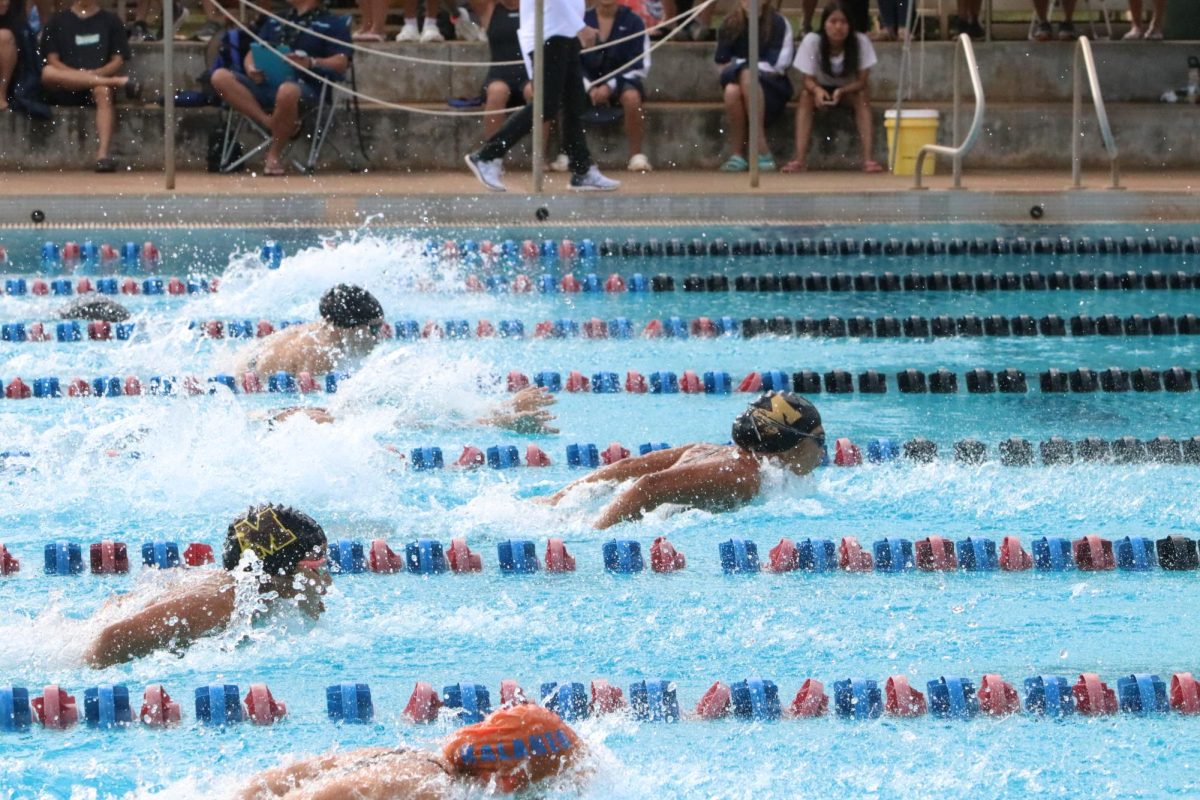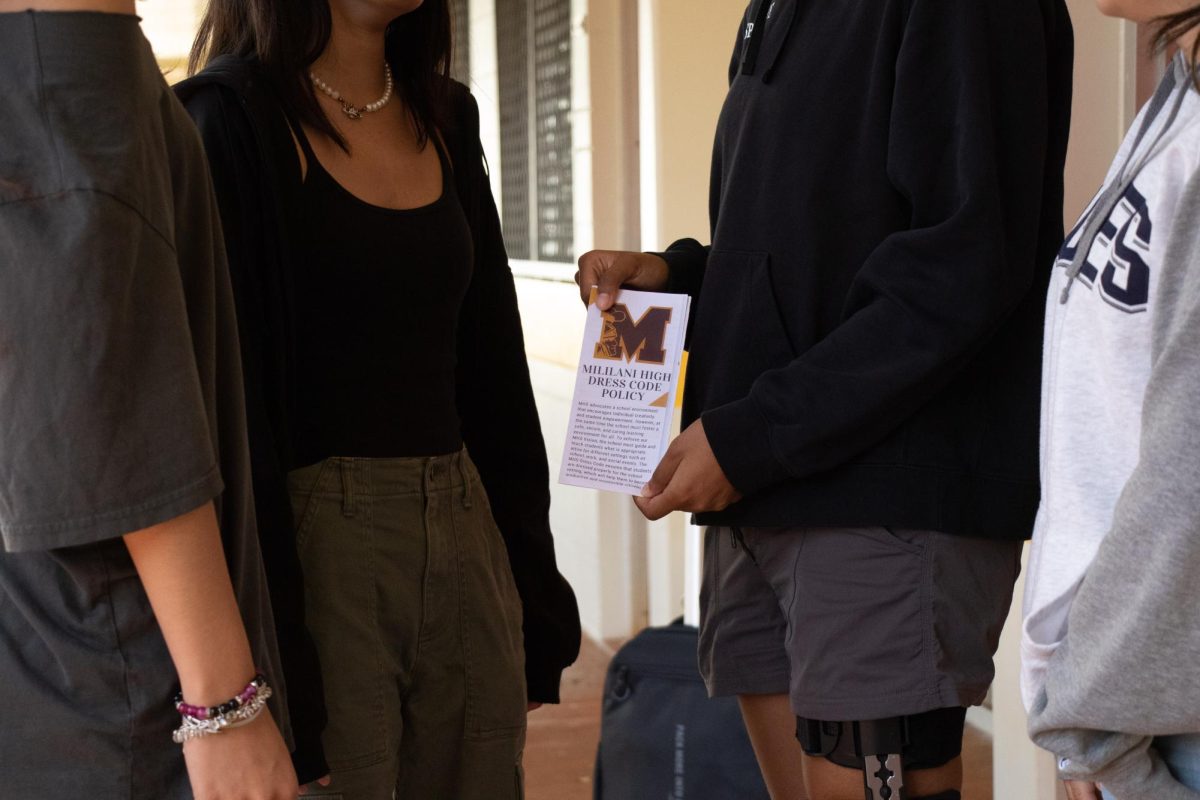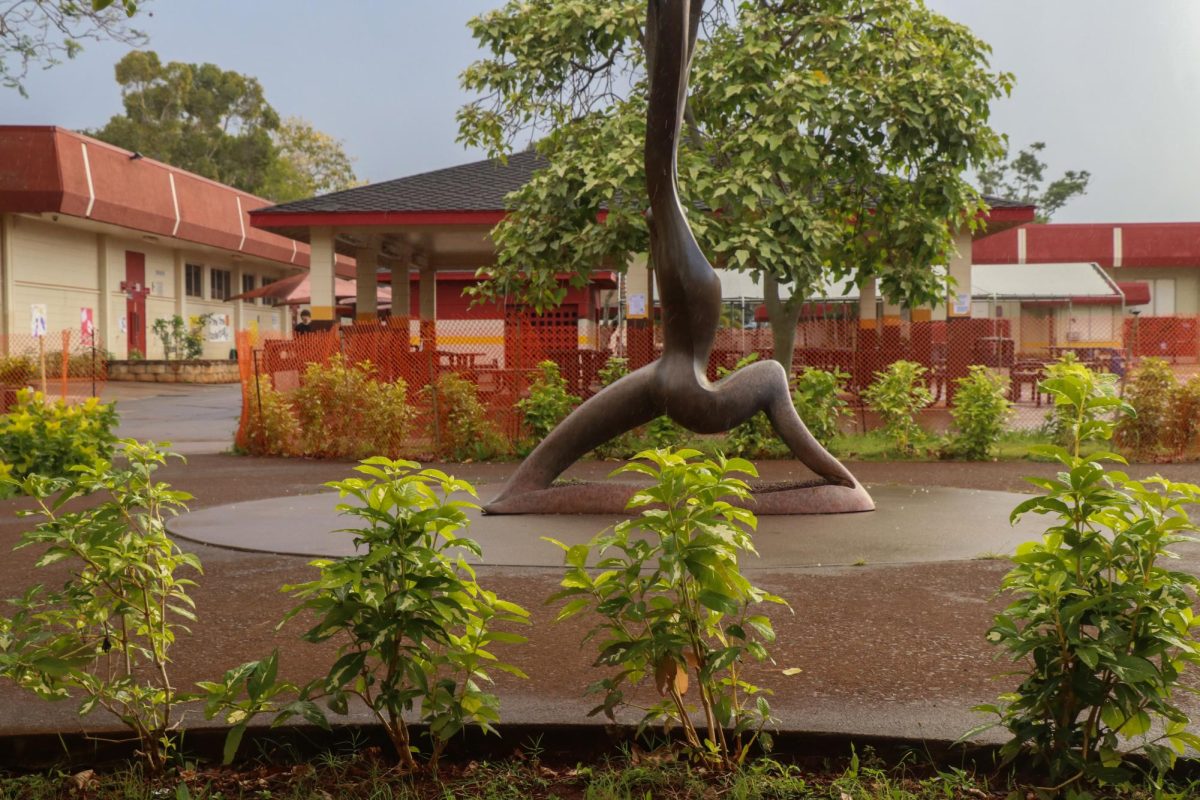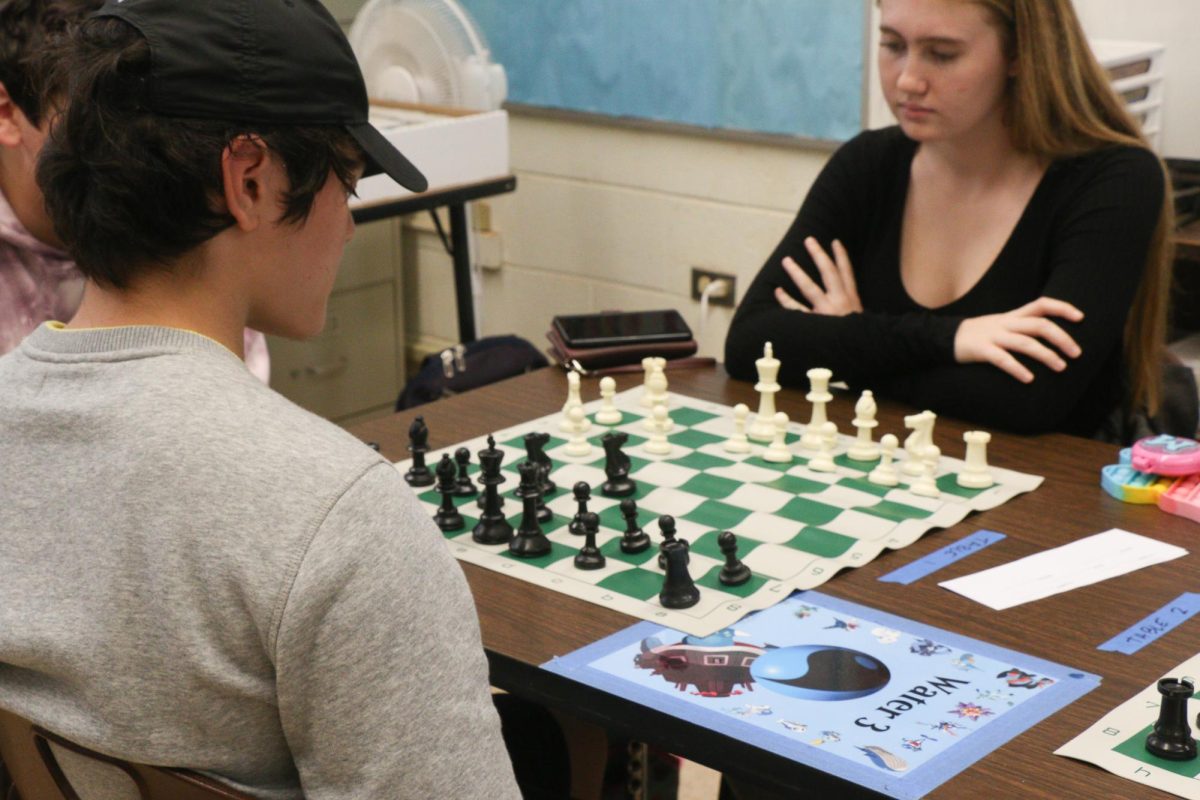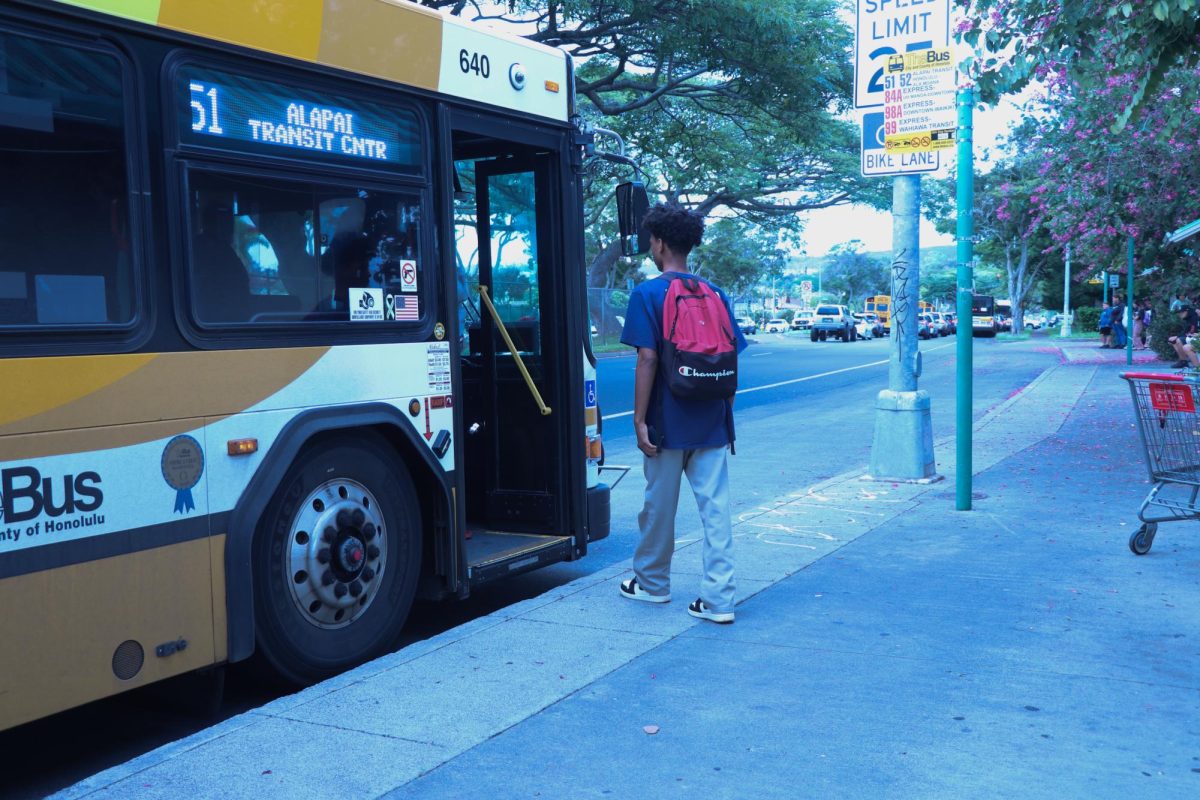By April-Joy McCann
[email protected]
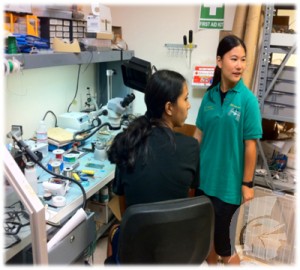
The sky was not the limit for Freshman Rachel Watanabe, who was selected to participate in the International Space Station project for the Girl Scouts of Hawaii. Watanabe, who was one of eight students from around the island, had the opportunity to work in a team that designed and built an experiment that was actually sent into space on March 1.
“It’s something new and different because (the experiment is) actually going up into space, and just to be a part of that is really amazing because not a lot of people can say they actually sent something to space,” expressed Watanabe.
Watanabe’s mother first heard about the experiment when it was on the Girl Scouts website and encouraged her to join. She then applied and went through an interviewing process where the organization narrowed down choices to students who could make the time commitment. Shortly after, Watanabe was chosen as a participant.
Other members included students from Punahou Schools as well as Iolani Schools.
The team started working on the project early in August of 2012. “It was a gigantic honor to be one of the ones chosen, like she’s really humble about it,” explained Science teacher Sandra Webb.
According to Watanabe, the goal of the project was “to see sustainability up in the International Space Station and then if (astronauts) went on longer journeys, (astronauts) would have a food supply to use.” The experiment, which was about the size of a stick of butter, was a hydroponic self-sufficient growing system that grew microgreens, specifically arugula, in microgravity.
The team was divided into groups that worked on different aspects of the project. Watanabe worked largely on engineering the electrical system and built a circuit board. “We had to order parts and LEDs, our water valve and all our capacitors of the circuit board. We had mentors that helped us with it and we basically did it on a computer, ordered it and shipped it to us,” she said.
The team met weekly at the Ala Moana Hotel an average of four hours a week, but often put in extra time researching. “Whenever (Rachel Watanabe) does something she puts in a lot of effort, like she spent a lot of time outside of the meetings trying to do research and trying to make sure that the project was the best it could be,” said her sister and Alumna Kelsi Watanabe.
They worked not just with mentors, but with community groups as well. “Oceanit was willing to help us; they gave us their laboratory, so we could use their laboratory and all their equipment and assists us with anything we needed. We also had Nalo Farms; they gave us their microgreen seeds and they let us on their farm and on their property,” said Rachel Watanabe. Webb added, “They didnít just have to research areas from books, they are talking to experts in the fields.”
When the project was finally completed, the entire experiment was sent to Cape Canaveral, Fla., where it was launched into space on the Falcon 9 rocket that carried the Dragon spacecraft. Its mission was to resupply the International Space Station as well as bring important experiments into space. On the launch day, however, there was a problem with two of the boosters after the Dragon achieved orbit. “That was kind of nerve-wracking, more so, and once we heard that they fixed the problem and they got it docked we felt relieved. It was something exciting,” said Rachel Watanabe.
The experiment will be in space for a month. The experiment on the ship contains a camera inside that periodically takes pictures, while a control group here on Earth is also being tested. “Once it comes back we can compare the result by going to Oceanit to use their laboratory because they have machines that can look at the molecular structure and see if any of the cells changed or was different,” explained Rachel Watanabe.
Rachel Watanabeís success was largely due to the encouragement she received from her family. “My family realized how much time and dedication itís taken and so overall theyíre working to support her and I think thatís really good and she really deserves it,” expressed Kelsi Watanabe.
Rachel Watanabe and the rest of the team celebrated their success at a launch party held at Duke’s in Waikiki on March 9. Webb, Principal Fred Murphy, family and friends were all there to commemorate her outstanding work and continue to support Rachel Watanabe in her future endeavors.

